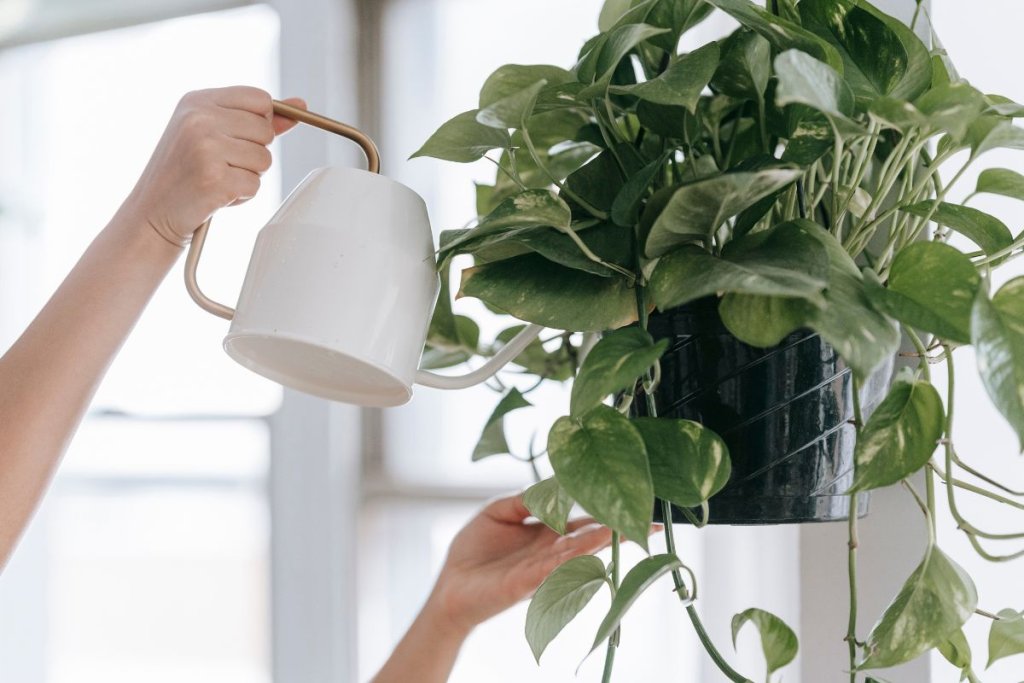Houseplants give your house a touch of greenery and refreshment. But before you bring them home, you must understand how to care for them. One common problem that we notice is people overwatering or underwatering their houseplants.
Watching the plant undergo various problems because you did not water them properly can be quite disheartening. Houseplants do not stand over a pool of water if you want to keep them hydrated and healthy.
To help you avoid these, we have 5 watering tips for your indoor plants.
1. Water the plant timely and thoroughly.
The best technique to understand a plant’s watering needs is to touch the soil to feel the dryness.
In most cases, a plant is ready to take water when the top few inches of the soil has dried, but a few inches from the bottom soil remains moist.
Never let the plant stay dehydrated for a very long time.
Sometimes, some plants will display signs like wilting when they need water.
Since wilting could also be a sign of overwatering, you should check the soil and water the plant well if it feels dry.
Please do not give them only a small sip when your plant demands water like a clusia hedge.
It would be best to water them thoroughly till you see the excess water draining out of the drainage holes. Giving the plant a good drink keeps it happy and encourages healthy root growth.
Always throw the excess water from the saucer.
2. Remember: Different plants have different watering needs.
When you check the soil for watering, do it for all the houseplants. Different plants have different watering needs.
One plant needs water doesn’t mean the others will need it too. Excessive watering can lead to overwatering and root rot, which can get difficult to handle.
For example, succulents should be kept mostly dry as they can store water in their leaves and tolerate droughts for longer periods. Besides, they are more vulnerable to root rot.
On the contrary, tropical plants like ferns need to have consistently moist soil. Allow the soil to dry out between each watering.
The goal is to keep the soil moist, not soggy. If you feel that the soil surface is still wet for some plants, wait for some more days to water them.
If you want to know more about how long indoor plants can go without water, you can check out How Long Can House Plants Go Without Water? (With 25 Examples).
3. Consider the seasons and other environmental factors.
Following a strict watering schedule never works because plants have different watering needs in different situations depending on the season, soil type, light, temperature, etc.
Some plants don’t require winter watering because they go dormant and start conserving energy to grow vigorously in the coming months. As a result, they require much less water than other seasons.
Plants getting more sunlight need more water than those under low light. Water tends to dry faster under the sunlight. So, to fulfill the plant’s watering needs, you must water it more frequently to keep the soil moist.
Soil and indoor temperature and humidity are also responsible for the variation in your plants’ watering needs. So, it is best to understand these and check the soil’s moisture level before watering.
4. Don’t use softening or tap water.
Softening water systems contain many harsh minerals, which are not good for plants. For example, the water systems use sodium, which can poorly affect your plant.
Tap water contains harsh chemicals like chlorine, fluorine, and other bicarbonates, which can harm the plant. It creates a white crust over the soil, which is salt accumulation. These salts can absorb all the moisture and keep the plant dehydrated.
The best type of water for indoor plants is rainwater or distilled water. These kinds of water are pure and free of harsh chemicals. If you only have tap water, let it sit overnight to let the chemicals evaporate. Then use it for watering.
5. Water the soil and not the leaves and flowers.
When you water the plant, you should pour the water on the soil, around the plant base, and not over the leaves or flowers. Water splashing on the leaves or flowers can keep them wet for a long time. It can further encourage various fungal diseases. The best way out is to use watering cans.
Watering cans with a long spout mouth helps provide the water directly to the base of your plant and spread it evenly in all directions. It also prevents splashing water on the flowers and leaves, which may happen if you use a mug, bottle, or glass.
If you want to grow beautiful flowers in your home or backyard, check out the blogs by Richa on nurserylady.com, which have all the tips you need.

